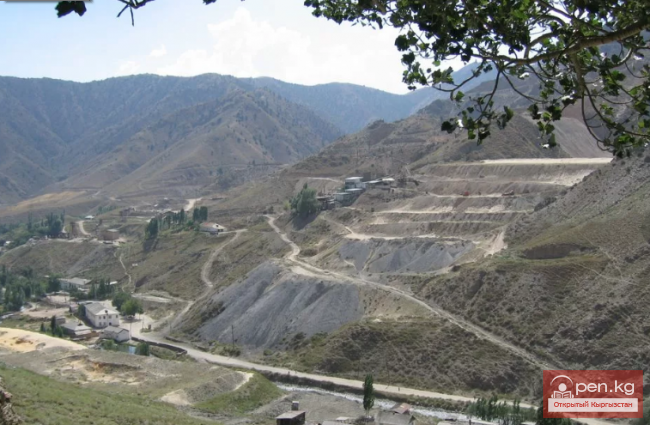Uch-Korgon – a large village (kishlak) in the northeast of the Batken region.
The word "korgon" translates from Turkic as fortress (not to be confused with burial mounds). The settlement stretches in close proximity to the Uzbek border, in the very south of the Fergana Valley. To the south of Uch-Korgon rise the mountain ranges of the Alai Ridge. The Isfayram River flows through the village. Uch-Korgon is located along the Southern Kyrgyz Highway (Kadamjai – Osh), and the nearest railway station is in the neighboring city of Kyzyl-Kiya. The village is multinational, with Kyrgyz being the minority, while Tajiks and Uzbeks prevail. Trade flourishes in this border kishlak.
During the Soviet era, the settlement was known as Molotovabad (until October 13, 1999, part of Osh region).
Uch-Korgon has an ancient history. Historical monuments from the Zoroastrian period have been discovered on its territory. The famous Russian traveler A. P. Fedchenko visited here. In Uch-Korgon, the Soviet commander M. V. Frunze met with the well-known basmachi leader Madaminbek and persuaded him to accept Soviet power. At one time, the emir of Badakhshan hid in Uch-Korgon. The tomb of one of the commanders of the Kokand Khanate, Niyaz Sarkor, who died defending his homeland from the Dzungars, is located here. There is also the tomb of the religious figure Ishan Balkhi and several other notable theologians.
During the Great Patriotic War, 505 residents of Uch-Korgon died defending the Soviet homeland from fascist Germany. Subsequently, several people died fulfilling their international duty in Afghanistan.
The village of Uch-Korgon is located near the city of Kadamjai right on the border with Uzbekistan and does not differ in appearance from many other villages along the Osh-Batken highway. However, the village is unique in that it is the largest cultural enclave of Tajiks in Kyrgyzstan. They have lived here alongside Kyrgyz and Uzbeks for centuries, although frequent conflicts on the Kyrgyz-Tajik border complicate life for the national minority.
Despite the interethnic problems in the south of the country, the residents of Uch-Korgon – both Tajiks and Kyrgyz – have become an example of harmonious coexistence between the two peoples.
Here lives the well-known Tajik-speaking poet of Kyrgyzstan, Sharifjoni Uch-Korgoni, whose works have been published in Kyrgyzstan, Tajikistan, Afghanistan, and Uzbekistan.
Many engage in gardening, growing apples, peaches, cherries, plums, and grapes, with a large portion of the fruits being exported.














































